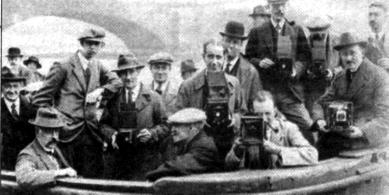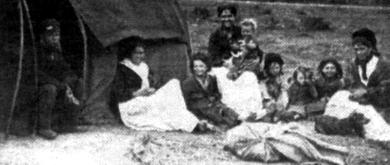Capturing a Century - The Croydon Camera Club
Since it was established in 1890, Croydon Camera Club has seen two world wars, and has evolved from a gentlemen's club to allow women enthusiasts to join.

Image: A Club Outing on the Thames in 1925
It was the first organisation of its kind in Britain to link with others in Europe.
The club was founded by Hector Maclean, an acclaimed pictorial photographer and photographic writer, In a time when the town was a manufacturing centre for films, plates and chemicals to cater for the fast-growing interest in photography.
Membership quickly rose to 40 people, for a joining fee of 10 shillings and sixpence, and even from its earnest days the club met every Wednesday, even during both world wars.
In the early years the rapid technical developments in photography attracted many members, interested in chemistry and the science of photography.
In more recent years, the final photograph was the emphasis, rather than how it was produced. However with the coming of the digital age, technical matters have, again, become a major topic at the club.
Croydon Camera Club's first 56 years boasted a men only membership until 1946, when ladles were finally admitted to the group.
And some of its more significant members in the early years included several people who worked for, or were closely linked with Croydon-based photographic company Wratten and Wainwright, which was later taken over by Kodak.
Kodak has endeavoured to keep the company's name alive, in part, with its world renowned Wratten filters.
Among those was Dr Kenneth Mees, whose experiments gave rise to the first panchromatic plates and when Wratten and Wainwright was bought by Kodak, its founder, ID Wratten, who was also a Croydon member, became a director of Kodak in this country.

Image: An early shot taken by one of the club's members: S. H. Wratten, entitled Gypsies on Mitcham Common
Dr Mees went on to set up the Kodak Research Laboratories in the United States, before becoming a Kodak vice-president.
Other notable members included Enoch Salt, the regular peppery contributor to the British Journal of Photography under the name of The Office Boy, WHSmith, general manager of the Platinotype Company, and C Welborne Piper, who perfected the Bromoil process.
In the 1970s, the club became the first in Britain to enter into formal association with similar societies in France, Belgium and Switzerland.
As a direct consequence a series of important exhibitions were mounted, under the name Photeurop. The club's current members regularly compete in Surrey Photographic Association and Federation of South London Photographic Societies.
Bill Yates, the club's current honorary secretary, has been a member of the club for the last 10 years. He said: "The camera club has about 60 members, which is not as many as it had m its heyday, when it had around 100, but it is still quite a few.
"Of course that tended to be in the days when there were not quite so many counter distractions, such as television, and other activities that people get involved in now."
